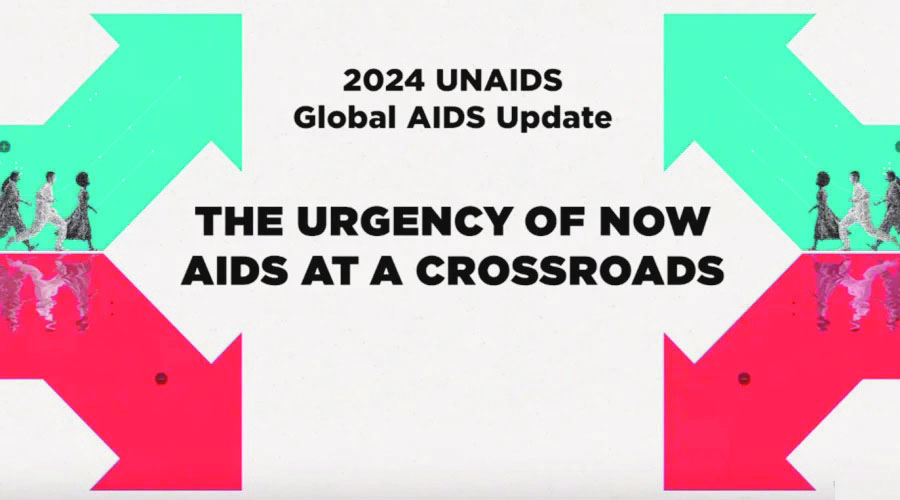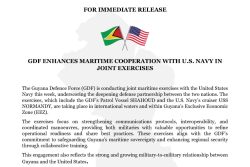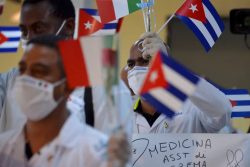While a “worrying” increase of AIDS-related deaths has been reported in Belize, Cuba, Guyana and Suriname, a recent UNAIDS report is advocating that the end of the AIDS epidemic can be achieved by 2030 if leaders take bold actions.
The report, “The Urgency of Now: AIDS at a Crossroads” which was released on Monday, argued that the world is at a “critical” moment that will determine whether world leaders meet their commitment to end AIDS as a public health threat by 2030, a UNAIDS release stated. The report brings together new data and case studies which demonstrate that the decisions and policy choices taken by world leaders this year will decide the fate of millions of lives and whether the world’s deadliest pandemic is overcome.
UNAIDS [Joint United Nations Programme on HIV/AIDS] unites the efforts of 11 UN organizations – UNHCR, UNICEF, WFP, UNDP, UNFPA, UNODC, UN Women, ILO, UNESCO, WHO and the World Bank – and works closely with global and national partners towards ending the AIDS epidemic by 2030 as part of the Sustainable Development Goals, the release informed.
And while the report delivers the uplifting news that the end of AIDS (Acquired Immune Deficiency Syndrome) is within grasp, the data also shows that the world is off track. It noted that of the 39.9 million people living with HIV (Human Immuno-deficiency Virus) – which causes AIDS – globally, 9.3 million, nearly a quarter, are not receiving life-saving treatment. Consequently, a person dies from AIDS-related causes every minute.
Closer to home, in the Caribbean, it reported that substantial progress against HIV has been noted since 2010, but, the reduction in the annual number of new HIV infections slowed down over the past five years. At the end of 2023, Cuba, the Dominican Republic, Haiti and Jamaica, the larger countries in the region, accounted for almost 90% of new infections—with Haiti alone accounting for more than one third (38%) of new HIV infections. People from key populations and their sex partners continued to account for 47% of new infections in 2022.
The report emphasised that should leaders take the “bold actions” needed now to ensure sufficient and sustainable resourcing and protect everyone’s human rights, the number of people living with HIV worldwide, requiring life-long treatment, will settle at around 29 million by 2050. Conversely, if they take the wrong path, the number of people who will need life-long support will rise to 46 million (compared to 39.9 million in 2023).
UNAIDS Executive Director, Winnie Byanyima, explained. “World leaders pledged to end the AIDS pandemic as a public health threat by 2030, and they can uphold their promise, but only if they ensure that the HIV response has the resources it needs and that the human rights of everyone are protected,” adding, “Leaders can save millions of lives, prevent millions of new HIV infections, and ensure that everyone living with HIV can live healthy, full lives.”
Staying with the Caribbean, the report shows treatment coverage continued to expand but “significant” challenges remain as it relates to late diagnosis and enrolling, and keeping people living with HIV in care. It informed that at the end of 2023, an estimated 85% of people living with HIV knew their status, 70% of all people living with HIV were on treatment, and 61% of all people living with HIV were virally suppressed. The percentage of people living with HIV who were on treatment and virally suppressed rose from 79% in 2018 to 87% in 2023. Treatment coverage was 78% among women (aged 15+ years) and 65% among men (aged 15+ years). However, it highlighted that paediatric treatment coverage, at 39%, was much lower than adult treatment coverage in 2023, and late diagnosis of advanced HIV disease (AIDS) remains a significant challenge in the region.
It acknowledged that the expansion of persons accessing treatment which has resulted in AIDS-related deaths in the Caribbean falling by 57% since 2010 is a landmark public health achievement, but tempered this positive with the fact that a “worrying” increase has been reported in Belize, Cuba, Guyana and Suriname.
The Caribbean, the report also informed, is the region that proportionally relies the most on foreign donations globally, however, with more than 70% of its resources for the response depending on external aid. Most Caribbean countries are classified as upper-middle-income countries and may no longer be eligible for Global Fund resources, but there are significant differences between countries. Further, Guyana was identified as one of several countries which face economic challenges compounded by political instability and the impact of climate change.
According to UNAIDS Multi-Country Director for the Caribbean, Dr Richard Amenyah, “Prioritising targeted interventions, community-led responses, and integration to leave no one behind; bolstering treatment accessibility and retention in care; advocating for legal reforms; and challenging harmful gender and other social norms, will go a long way to address the root causes of risk and vulnerability of people living with, and most affected by, HIV.” He also pointed out, “There is a great need to strengthen partnerships with communities and enhance the role of civil society to reach vulnerable and at-risk groups that are hard to reach with HIV services or find it difficult, for whatever reason, to engage our health facilities.”
“Urgency of Now: AIDS at a Crossroads”, endeavours to show that decisions taken this year will determine if 1) global targets are met, 2) AIDS is ended as a public health threat by 2030, and 3) a sustainable HIV response is built. As such, the report demonstrates that HIV prevention and treatment services will only reach people “if human rights are upheld, if unfair laws against women and against marginalised communities are scrapped, and if discrimination and violence are tackled head on.”
UNAIDS Regional Director for Latin America and the Caribbean, Luisa Cabal, expounded, “Like the title of the report tells us, we are at a crossroads. We can take the road that continues to punish people for who they are, who they love, how they work, and that is the road through which we can never end aids as a public health threat,” while contending, “Or we can choose the road of rights protections, of respecting others, of following the science and the evidence. This is the road that has led to reductions in new infections and to healthy lives.”









